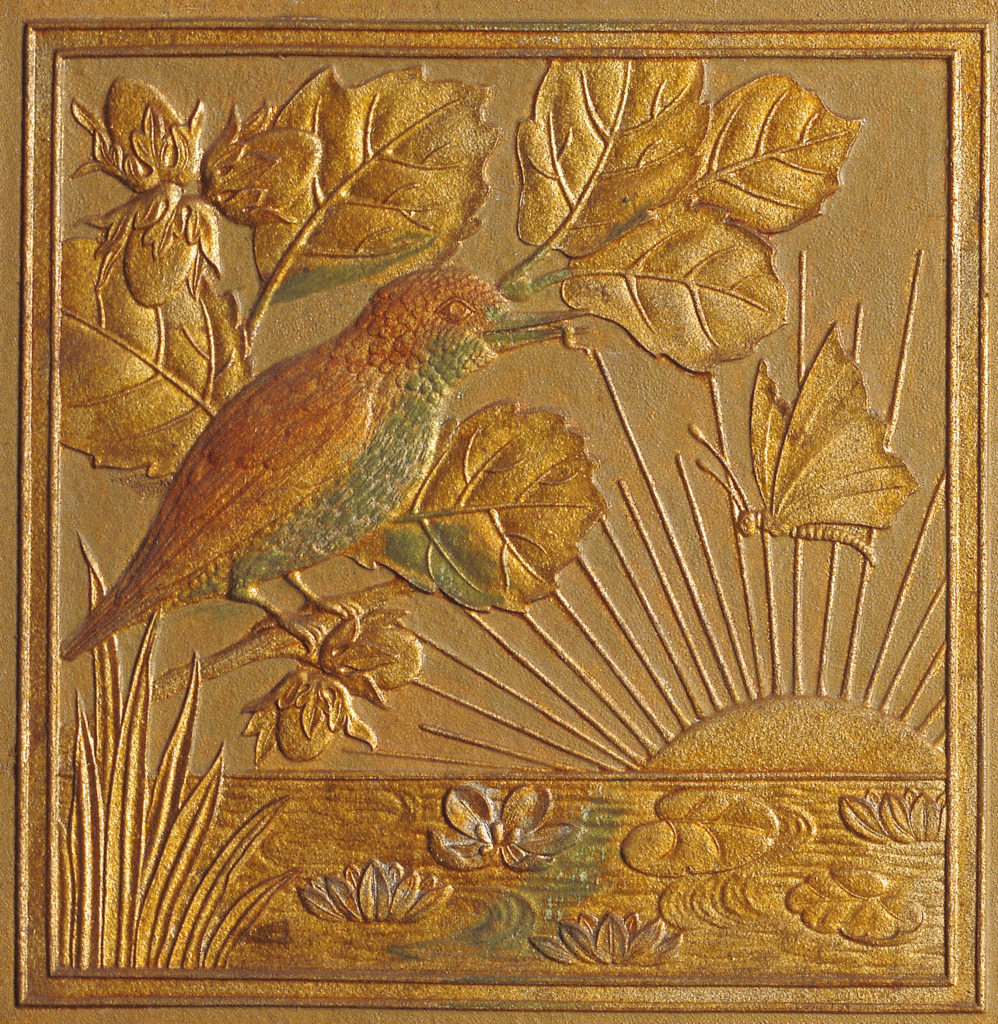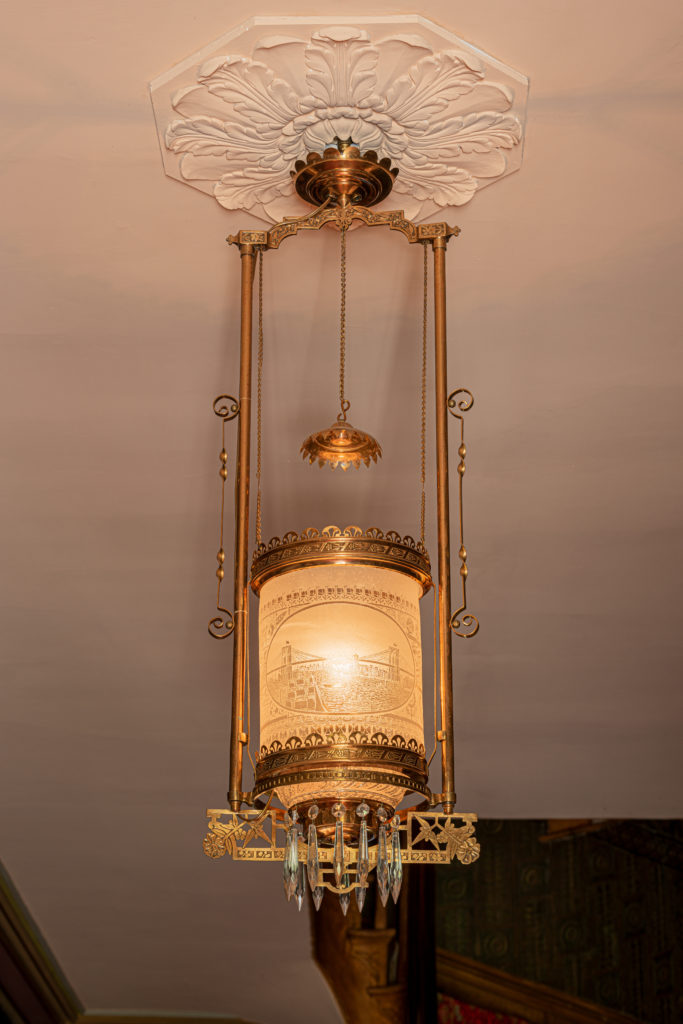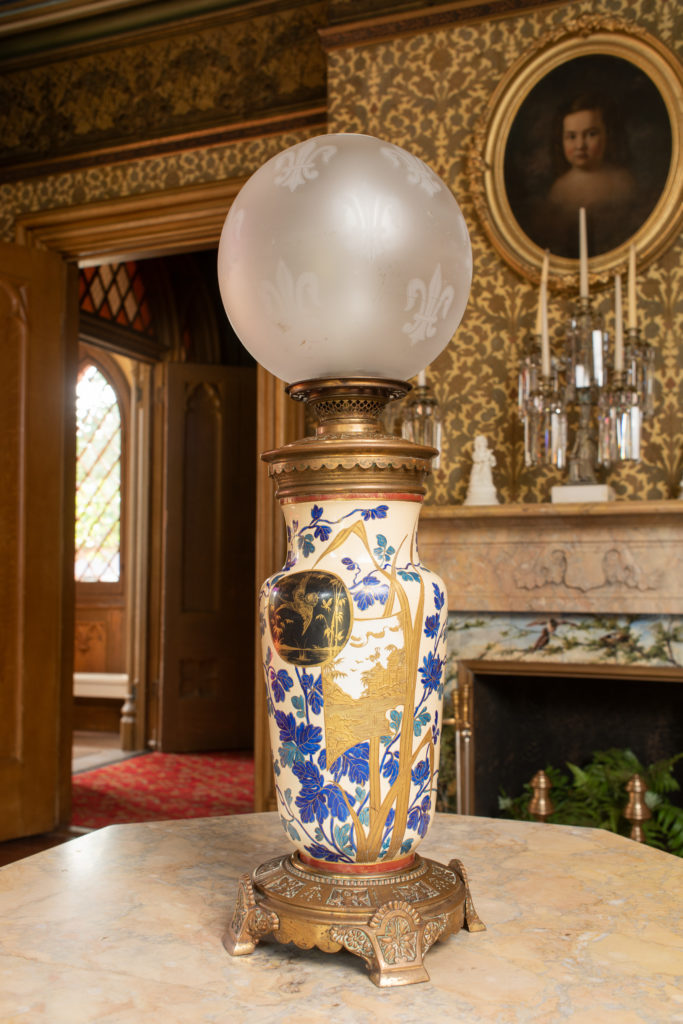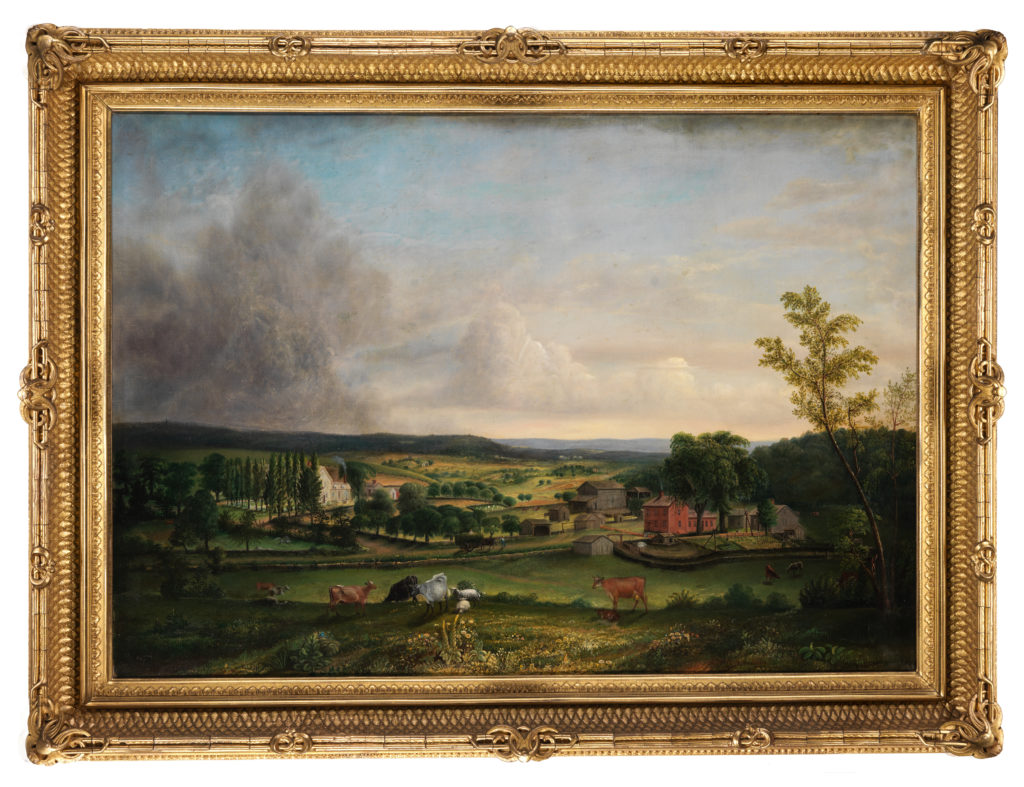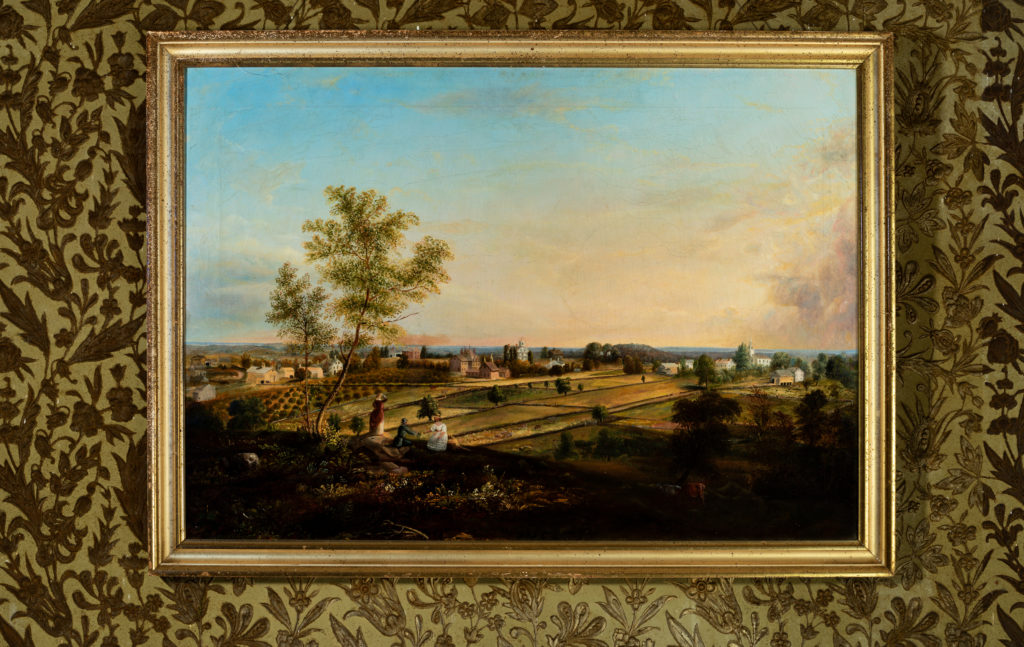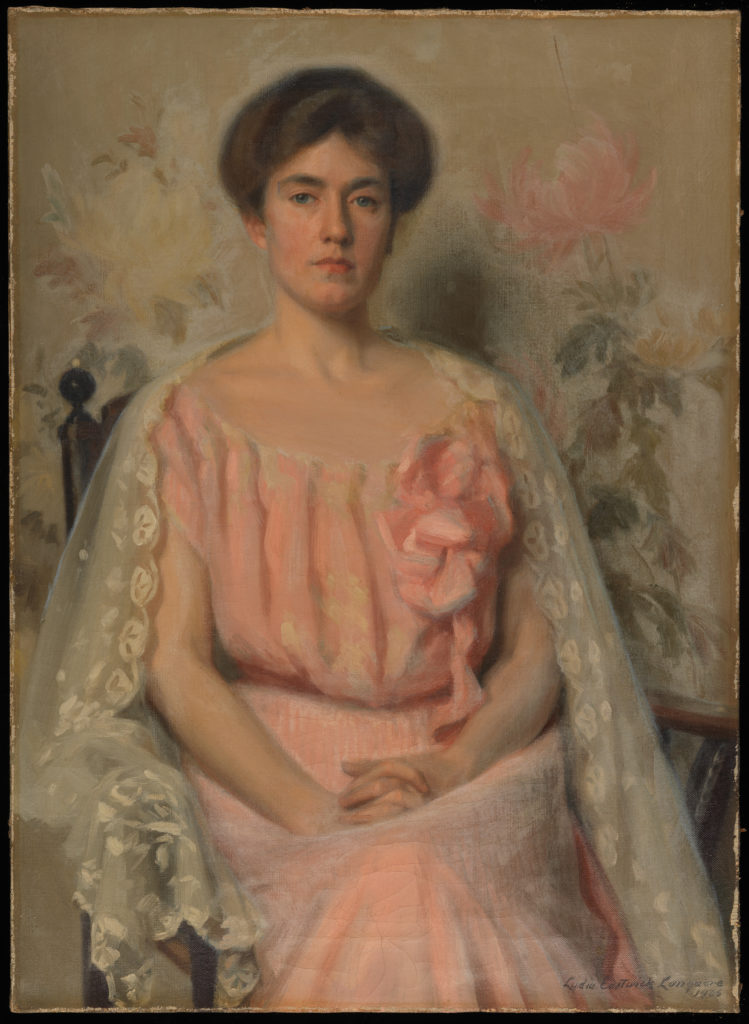 Roseland Cottage
Roseland Cottage
Decorative Interiors
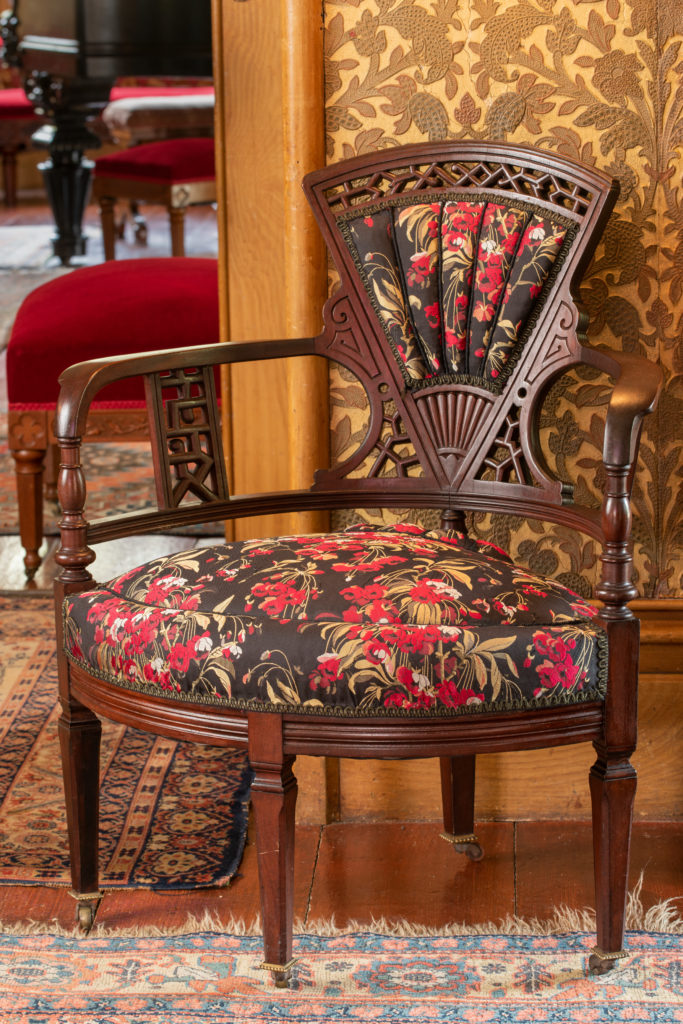
Roseland Cottage is one of the few Gothic Revival homes that remains virtually unchanged inside and out, from the days when it echoed with the voices of Lucy, Henry, and their ten children and later, when Henry and Ellen Holt, his second wife added features not usually associated with a country home. It survives with its furnishings, 1880s elaborate wall coverings, stained glass, family belongings, and “modern” conveniences.
Lincrusta Resplendent
Click on the image to take a closer lookWhen it was New
The 1880s wallcoverings in the public spaces of Roseland Cottage are a type known as Lincrusta-Walton or Lincrusta. Invented by Frederic Walton in England in 1877, it’s produced by pressing a mixture of wood pulp and linseed oil onto a fabric or paper backing to create a raised pattern. Beginning in 1883 Lincrusta was produced in the Stamford, Connecticut, factory of Frederick Beck & Co. This is how the Lincrusta looked when installed in the house in the 1880s, at the height of the Gilded Age.
Lincrusta Today
Commemorating the Brooklyn Bridge
Click on the image to take a closer look“The Latest Glory”
In the opening address celebrating the completion of the Brooklyn Bridge in 1883, former U.S. Congressman and New York City Mayor Abram Hewitt rhapsodized: “It stands before us today as the sum and epitome of human knowledge; as the very heir of the ages; as the latest glory of centuries of patient observation, profound study and accumulated skill, gained, step by step, in the never-ending struggle of man to subdue the forces of nature to his control and use.” When Bowen redecorated Roseland Cottage in the late 1880s, this lantern was a suitable celebration of Bowen’s own achievements. It also served as a reminder that this was a Brooklyn family that summered in Woodstock. The lamp, originally fueled by gas, was adapted to oil or kerosene–Woodstock and Roseland Cottage never had access to gas–and later adapted for electricity.
Aesthetic Style
Click on the image to take a closer lookTable Lamp
Japan and United States, porcelain, glass, bronze, c. 1890
This Japanese vase may well have been fitted out as a lamp soon after it was produced. The vase itself, with its asymmetric decoration, gilt overglaze, and flying bird motif is very much in the Aesthetic style, while the base, more rectilinear and geometric, is a subset of the style known as Eastlake, after its principal proponent, Charles Eastlake. The fleurs-de-lis on the globe add a third element in a mash up of styles that is typical of the period.
Sawyer Paintings
Click on the image to take a closer lookChandler Farm
Chandler Farm, James J. Sawyer (1813-1888), Pomfret, Connecticut, 1858
In 1839, James Jones Sawyer left Pomfret, Connecticut, to embark on a career as an artist in New York City. There he found a patron in Henry C. Bowen. Although Sawyer exhibited at the National Academy of Design, his real success began after he returned to Connecticut, no doubt with Bowen’s support. He enjoyed a prolific and varied career painting portraits of prominent citizens, copying ancestral portraits, and painting scenes from nature like this detailed painting of Chandler Farm in Pomfret, Connecticut.
Chandler Farm is typical of the productive farms that dotted the New England landscape in the mid nineteenth century when ninety percent of the population was still engaged in some form of agriculture. It was then owned by John Chandler, the fourth generation of his family to work the hundred-acre plot of land. The main farmhouse and large barn are surrounded by numerous outbuildings. Well-maintained stone walls and fences separate specific areas, including the piggery and the tidy kitchen garden.
Chandler Farm was the home of Ellen Holt, second wife of Henry Bowen.
Woodstock Hill
Woodstock Hill, James J. Sawyer (1818-1888), Woodstock, Connecticut, 1859.
The artist James J. Sawyer grew up in northeast Connecticut, close to Woodstock. He and Henry Bowen became acquainted after Sawyer moved to New York to train as an artist and find clients. Although Sawyer made a decent living in New York, mostly painting copies of old family portraits, he eventually returned to Connecticut. This view, taken from Woodstock Hill overlooking Roseland Cottage with Elmwood Hall (a boarding house catering to summer visitors) behind it, may have been commissioned by Bowen, or it may have been a gift. It’s a wonderful document showing not only the Cottage, but the buildings and agricultural fields that surrounded it in 1859.
Portrait of Constance Holt
Click on the image to take a closer lookConstance Holt
Constance Holt, Lydia E. Longacre (1870-1951) Old Lyme, Connecticut, 1905
Oil on canvas, painted when Constance was in her mid-twenties by Lydia Longacre. The artist trained under William Merritt Chase in New York and James Abbott MacNeil Whistler in Paris. The shawl worn by Constance has been identified as one she intended to wear as a veil at her wedding to a man she met on one of her trips to Italy. Reportedly, the family forbade her to marry him. For more information on Constance Holt, see People of the Pink House: Grandchildren.
